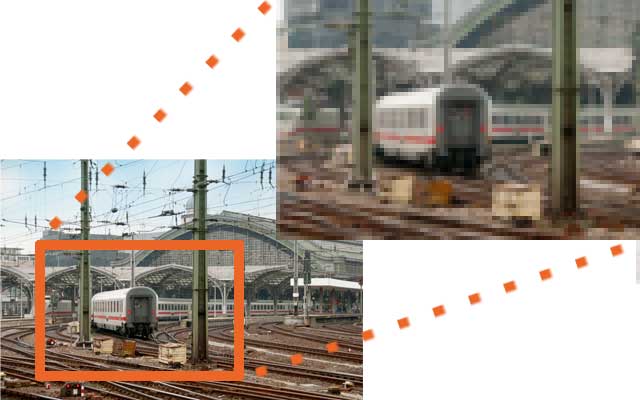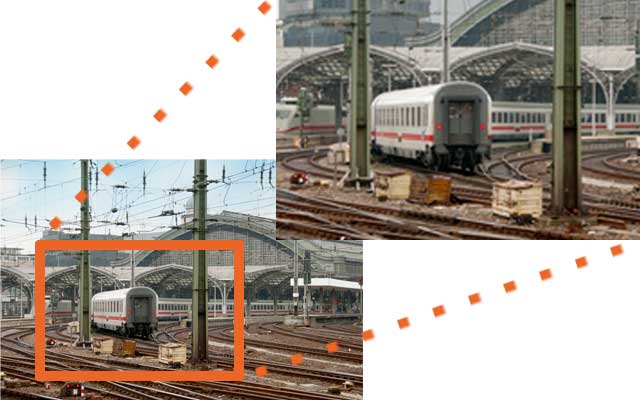One of the most frequent questions we get asked is the reason some cameras are priced differently to others. There’s often a variety of reasons, but one of the main culprits is the lens.
In short, fixed lens cameras give a specific field of view, while the viewing angle of a varifocal is set during installation. The moving parts and lens adjustment required for varifocals increase the price of a camera.
Though, of course, there’s a little more to it than that.
Fixed view cameras
These cameras come with a pre-configured lens which gives you a fixed field of view. With few moving parts, fixed-view cameras provide a simple set-up.
If you’re unsure of which lens a camera contains, this is found in the technical specification on our product pages.
Their relative simplicity, competitive price and choice of models make fixed view cameras popular for homes and small businesses. For general surveillance, they’re usually very effective.
When to use a fixed-view camera
1. When money is tight
Due to their lack of moving parts fixed view cameras are the most cost-effective on the market. We currently offer a number of models for around £100 (exc. VAT).
2. When you are happy with an overview
If you’re looking for general surveillance, fixed-view models are perfect. You choose a camera which will give you the closest match to the scene you want to monitor, mount it and that’s it.
3. Quick and easy install
The lack of moving parts makes the installation easy. There’s no need to adjust the focal length or angle of view, just point the camera in the right direction and away you go.
This makes fixed-view lens cameras great for smaller businesses.
Static camera suggestions

|

|

|
|
Axis M3216-LVE
2.9mm, 102° field of view |
Wisenet QND-8010R |
i-PRO WV-S3531L |
Varifocal cameras
With an adjustable lens, varifocal cameras allow you to adjust until you have the perfect field of view. Unlike pan tilt zoom models, this adaptability is used for installation only. Once your field of view is set, it stays the same, until it is adjusted.
Varifocals have a to and from range, most typically covering somewhere between 2.8 and 12mm. For long-distance surveillance like licence plate recognition cameras a range of 5 to 60mm is common.
The key benefit to a varifocal camera is the flexibility this gives you during installation. They allow you to adjust the lens between the top and bottom limits of its view angle. This flexibility does come with an increase in cost.
Remote zoom and focus
To make installation a little easier, some manufacturers have created varifocal cameras with remote zoom and focus.
Remote zoom and focus enable you to make small adjustments to your field of view post-installation. For example, if snow makes an area too bright which blurs your image, you can adjust this using P-iris.
Axis has the widest choice of cameras with this feature.
When to use a varifocal camera
1. If you don’t know the exact field of view required
It can be difficult to envision the exact field of view you require in a site. This is what makes a varifocal ideal – you can adjust the lens to get the desired view.
For example, if your camera is mounted at a distance from your subject, a fixed lens may include unnecessary detail. By adjusting the lens, varifocal cameras ensure your field of view only includes the subject you’re interested in.
2. Long term flexibility
If your use of a system changes over time, then a varifocal camera can adapt to your business needs. For example, if you start off needing an overview, then later wish to focus on a specific area, you can do so with an adjustment.
3. Sharper image quality
When you’re adjusting the varifocal field of view, you can manually set the viewing angle and depth of field. This enables you to monitor a specific of interest area within a scene.
If you're trying to do the same with a static camera you need to use the digital zoom, however the image quality may be reduced. This is because digital zoom enlarges the original image, using less pixels to give you the view you require.


With a varifocal camera, you adjust the lens to focus on the area of interest. This, therefore, allows you to utilise the full resolution of the camera, producing a high-quality image.
Varifocal camera suggestions
|
|
|
|
Axis M4216-LV
3mm-6mm, 45° to 100° horizontal field of view |
Wisenet QND-6082R
3.2mm-10mm, 33.2° to 109° horizontal field of view |
 |

|

|
|
Bosch DINION IP 3000i bullet
3.2mm-10mm, 33° to 104° horizontal field of view |
Wisenet XNV-6080R |
Axis P1455-LE |
Summary
There you have it! You should now know that the lens is the difference between fixed and varifocal cameras. As well as knowing that fixed are useful for budget-conscious installations which require an overview. For sites requiring precise monitoring, a varifocal would be a better choice.
This hopefully helps you to understand why some cameras cost more than others, though they may look the same.





